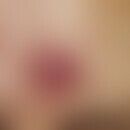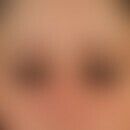Synonym(s)
HistoryThis section has been translated automatically.
Holmes and Panje 1983
DefinitionThis section has been translated automatically.
Rare benign disease of unknown aetiology, which may affect the sinonasal tract and the upper respiratory tract, more rarely the orbit. The disease is interpreted as a (monotopic) site-varying manifestation of an IgG4-associated autoimmune disease.
Concordant occurrence with the facial granuloma (eosinophlicum) has been observed several times (Burns BV et al. 2001; Yung A et al. 2005)
You might also be interested in
Occurrence/EpidemiologyThis section has been translated automatically.
w>m
EtiopathogenesisThis section has been translated automatically.
Unknown, type I sensitizations (e.g. mold allergy, house dust or plant pollen) are frequently detected. In one case a cocaine abus with a nasal septum perforation was present. Since eosinophilic angiocentric fibrosis belongs to the family of IgG4-associated autoimmune diseases, the pathomechaním is likely to be similar, although with organ-related variations (see there).
ManifestationThis section has been translated automatically.
Middle adulthood between 30-60 years
ClinicThis section has been translated automatically.
There are 2.0-5.0 cm large, "pseudotumorous" submucous, firm swellings which can lead to an increasing nasal obstruction. Often epistaxis (may be the first clinical sign of the disease). The radiological findings are non-specific and show an expanding soft tissue tumor gfls. also with bone erosion.
LaboratoryThis section has been translated automatically.
Increased serum IgG4 concentrations are detectable (as with other IgG4-associated diseases).
HistologyThis section has been translated automatically.
Detection of a perivascular eosinophilic infiltrate with lymphocytes and plasma cells as well as with conspicuous accompanying perivascular fibrosis which can lead to a characteristic onion-skin-like aspect.
TherapyThis section has been translated automatically.
Systemic steroidal therapy with subsequent surgical rehabilitation. A high local recurrence rate must be expected.
LiteratureThis section has been translated automatically.
- Chen VH et al (2016) A Concomitant Case of Orbital Granuloma Faciale and Eosinophilic Angiocentric Fibrosis. Ophthal Plast Reconstr Surg PubMed PMID: 27281484.
- Burns BV et al (2001) Eosinophilic angiocentric fibrosis affecting the nasal cavity. A mucosal variant of the skin lesion granuloma faciale. J Laryngol Otol 115:223-226.
- Chinelli PA et al (2004) Granuloma faciale associated with sinonasal tract eosinophilic angiocentric fibrosis. Acta Derm Venereol 84:486-487.
- Holme SA et al (2005) Concurrent granuloma faciale and eosinophilic angiocentric fibrosis. Br J Dermatol 153: 851-853 Jain R et al (2008)
- Holmes DK et al (1983) Intranasal granuloma facial. At J Otolaryngol 4: 184-186
- Narayan J et al (2005) Eosinophilic angiocentric fibrosis and granuloma faciale: analysis of cellular infiltrate and review of literature. Ann Otol Rhinol Laryngol 114: 35-42.
- Nigar E et al (2007) Eosinophilic angiocentric fibrosis and extrafacial granuloma faciale. Histopathology 51: 729-731.
- Nogueira A et al (2011) Granuloma faciale with subglottic eosinophilic angiocentric fibrosis: case report and review of the literature. Cutis 88:77-82.
- Singh A et al (2015) Eosinophilic Angiocentric Fibrosis of Sinonasal Region: A Rare & Under Reported Entity. J Clin Diagn Res 9: ED 05-6.
- Stelini RF et al (2016) Granuloma Faciale and Eosinophilic Angiocentric Fibrosis: Similar Entities in Different Anatomic Sites. Appl Immunohistochem Mol Morphol PubMed PMID: 26808128.
- Vassallo C et al (2015) Chronic localized leukocytoclastic vasculitis: clinicopathological spectrum of granuloma faciale with and without extrafacial and mucosal involvement. G Ital Dermatol Venereol 150:87-94.
- Watanabe N et al (2005) Atypical eosinophilic angiocentric fibrosis on nasal septum. Auris nasal larynx 33:355-358.
- Yung A et al (2005) Eosinophilic angiocentric fibrosis--a rare mucosal variant of granuloma faciale which may present to the dermatologist. Br J Dermatol 152: 574-576.
- Roberts PF et al (1985) Eosinophilic angiocentric fibrosis of the upper respiratory tract: a mucosal variant of granuloma faciale? A report of three cases. Histopathology 9: 1217-1225.
Disclaimer
Please ask your physician for a reliable diagnosis. This website is only meant as a reference.




